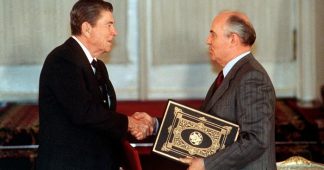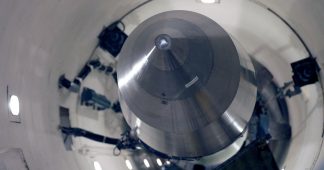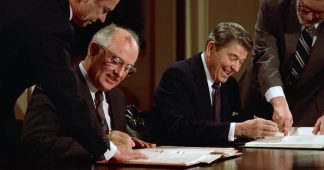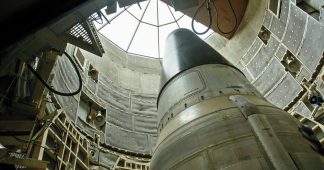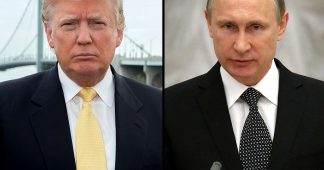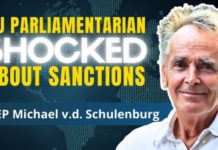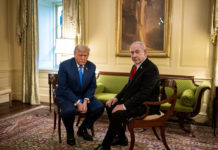2 February 2019
At the height of the Cuban Missile Crisis, as the world stood on the brink of nuclear annihilation, President John F. Kennedy told his brother Bobby, “If this planet is ever ravaged by nuclear war, if 300 million Americans, Russians, and Europeans are wiped out by a 60-minute nuclear exchange, if the survivors of that devastation can then endure the fire, poison, chaos, and catastrophe, I do not want one of those survivors to ask another, ‘How did it all happen?’ and to receive the incredible reply, ‘Ah, if only one knew.’”
Unbeknownst to President Kennedy, who was seeking to avoid a nuclear war, or his general staff, many of whom wanted to start one, such a war would have wiped out not 300 million people but all of humanity. The theory of nuclear winter, discovered in the mid-80s and subsequently accepted by scientific consensus, concludes that a full-scale nuclear war, as planned by the United States military, would render the entire planet uninhabitable for a century.
But it is precisely such a nuclear apocalypse that the United States is not just blindly stumbling toward, but directly preparing for. As a recent article in Foreign Affairs told its readers: “Prepare for Nuclear War.”
On Friday, US Secretary of State Mike Pompeo declared that the United States would suspend its compliance with the Intermediate Range Nuclear Forces (INF) treaty, a 1987 agreement between the Soviet Union (and subsequently Russia) and the United States that bans the deployment of missiles with ranges between 500 and 5,500 kilometers.
The move makes almost inevitable the US withdrawal from the other key global arms control agreement, the New START treaty, agreed between the United States and Russia in 2011, in what US president Trump called “one of several bad deals negotiated by the Obama administration.”
Little need be said about the White House’s official justifications for leaving the treaty: that Russia is in violation of the treaty’s provisions, despite repeated offers by Moscow for not only the United States, but international authorities and journalists, to inspect its missiles. The White House’s allegations are echoed by people who do not believe them and left unquestioned by a media apparatus that functions as a mouthpiece for the military.
In an article that fully backs the White House’s accusations against Russia, the New York Times’ David Sanger, a conduit for the Pentagon, spells out with perfect lucidity the real reasons why the United States is leaving the INF treaty:
“Constrained by the treaty’s provisions, the United States has been prevented from deploying new weapons to counter China’s efforts to cement a dominant position in the Western Pacific and keep American aircraft carriers at bay. China was still a small and unsophisticated military power when Ronald Reagan and Mikhail Gorbachev, the last leader of a rapidly-weakening Soviet Union, negotiated the I.N.F. agreement.”
Sanger’s own words make perfectly clear why the United States wants to leave the treaty, which has nothing to do with Russia’s alleged violations: Washington is seeking to ring the island chain surrounding the Chinese mainland with a hedge of nuclear missiles. But Sanger somehow expects, without so much as a transition paragraph, his readers to believe the hot air spewed by Pompeo about Russia’s “bad behavior.”
The US withdrawal from the INF treaty is not the result of Trump’s peculiar fondness for nuclear weapons. Rather, it is the outcome of a reorientation of the United States military toward “great-power” conflict with Russia and China.
Over the past two years, the American military establishment has grown increasingly alarmed at the rapidity of China’s technological development, which the United States sees as a threat not only to the profitability of its corporations, but the dominance of its military.
Two decades ago, at the height of the dotcom bubble, China was little more than a cheap labor platform, assembling the consumer electronics driving a revolution in communications, while American companies pocketed the vast bulk of the profits. But today, the economic balance of power is shifting.
Chinese companies like Huawei, Xiaomi, and Oppo are capturing an ever-greater portion of the global smartphone market, even as their rivals Samsung and Apple see their market share slip. The Shenzhen-based DJI is the uncontested global leader in the consumer drone market. Huawei, meanwhile, leads its competitors by over a year in the next-generation mobile infrastructure that will power not only driverless cars and “smart” appliances, but the “autonomous” weapons of the future.
As the latest US Worldwide Threat Assessment warns, “For 2019 and beyond, the innovations that drive military and economic competitiveness will increasingly originate outside the United States, as the overall US lead in science and technology shrinks” and “the capability gap between commercial and military technologies evaporates.”
It is the economic decline of the United States relative to its global rivals that is ultimately driving the intensification of US nuclear war plans. The United States hopes that, by leveraging its military, it will be able to contain the economic rise of China and shore up US preeminence on the world stage.
But a consensus is emerging within the US military that Washington cannot bring its rivals to heel merely with the threat of totally obliterating them with its massive arsenal of strategic missiles. Given the fleet of nuclear-armed ballistic missile submarines possessed by both Russia and China, this option, even ignoring the effects of nuclear winter, would result in the destruction of the largest cities in the United States.
Rather, the US is working to construct a “usable,” low-yield, “tactical” nuclear arsenal, including the construction of a new nuclear-capable cruise missile. This week, a new, low-yield US nuclear warhead went into production, with a yield between half and one third of the “little boy” weapon that leveled the Japanese city of Hiroshima, and hundreds of times less than the United States’ other nuclear weapons systems.
The Trump administration’s Nuclear Posture Review, released last year, envisions using such weapons to turn the tide in conflicts that begin with conventional weapons, under the pretense (whether the Pentagon believes it or not) that such wars will stop short of full-scale nuclear exchanges.
Nearly 75 years ago, the United States, after having “scorched and boiled and baked to death,” in the words of General Curtis Lemay, hundreds of thousands of civilians in a genocidal “strategic bombing” campaign over Japan, murdered hundreds of thousands more with the use of two nuclear weapons: an action whose primary aim was to threaten the USSR.
But ultimately, the continued existence of the Soviet Union served as a check on the genocidal impulses of US imperialism.
Despite the triumphalist claims that the dissolution of the Soviet Union would bring about a new era of peace, democracy, and the “end of history,” it has brought only a quarter-century of neocolonial wars.
But the wars in Iraq, Afghanistan, Libya, and Syria have not achieved their intended purpose. Having spent trillions of dollars and killed countless millions of people, the global position of US imperialism is no better than when it launched the “war on terror” in 2001.
Now, the United States is upping the ante: setting “great-power conflict” with Russia and China on the order of the day. In its existential struggle for global hegemony, US imperialism is going for broke, willing to take the most reckless and desperate means, up to and including the launching of nuclear war.
There is no peaceful, capitalist road toward managing the global crisis that has erupted with such force and violence. If humanity is to survive the 21st century, it will take the intervention of the working class, the only social force capable of opposing the war aims of the capitalist ruling elites, through the struggle to reorganize society on a socialist basis.
Andre Damon
Published at https://www.wsws.org/en/articles/2019/02/02/pers-f02.html
